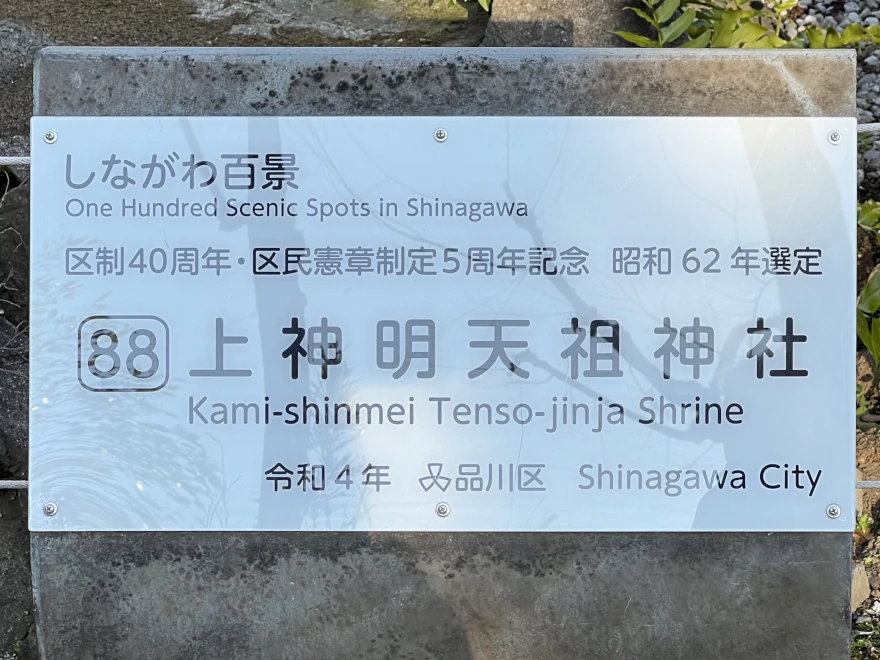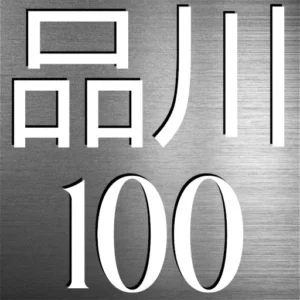🐍 Hebikubo Village and the Legend of Snake Hollow
📜 A Rain Miracle and a Snake Myth
The origins of Hebikubo Shrine go back to the Kamakura period. In 1271 (Bunei 8), Tokichiyo, the fifth son of Hōjō Shigetoki, entered the Buddhist priesthood and took the name Hōen Shōnin. He established Gonshō-ji Temple in present-day Ōmori, Ōta Ward. Some of his retainers settled nearby in a low basin called Hebikubo — “Snake Hollow.”
According to shrine tradition, in 1322 (Genkō 2), a monk from Gonshō-ji prayed to a dragon god at a local pond during a drought. When rain soon followed, the villagers built a shrine to give thanks. Later, legends grew around a white snake seen living near the spring. One story tells of the snake departing for Togoshi Park, then dramatically returning during a storm. Today, the white snake is worshipped as a symbol of prosperity, healing, and protection.
🏯 From Village Shrine to Spiritual Landmark
The shrine was first known as Shimmei-sha (神明社). Later, when it was formally recognized as a village shrine (村社), it was renamed Tenso Shrine (天祖神社), reflecting its dedication to Amaterasu. During World War II, the shrine buildings were destroyed. They were rebuilt in 1961, and a large-scale restoration followed in 2022 to mark its 700th anniversary. New features such as sacred springs, a dragon waterfall, and symbolic sculptures of its guardian deities were added.
🐍 From Kamishinmei Tenso to Hebikubo Shrine
The area now known as Futaba in Shinagawa was historically called Hebikubo-mura (蛇窪村), meaning “Snake Hollow Village.” This name likely derived from the low-lying topography of the region and its rich association with snake folklore and water deities. The name remained in informal use well into the Edo period and later influenced both the shrine’s nickname and its public identity. Today, remnants of the name live on in the shrine’s signage, local landmarks, and street furniture—including serpent-shaped lanterns and plaques.
The shrine’s official name is Kamishinmei Tenso Shrine (上神明天祖神社). The name combines:
- 上神明 (Kamishinmei): “Upper Shinmei” — the historical name for the northern section of Hebikubo mura.
- 天祖神社 (Tenso Jinja): “Shrine of the Heavenly Ancestor” — a title associated with Amaterasu Ōmikami.
Locals, however, long referred to the site as Hebikubo Shrine (蛇窪神社), drawing on the area’s old name and the shrine’s snake legends. In 2019 (Reiwa 1), the shrine formally adopted “Hebikubo Shrine” as its public name. The change was approved by the chief priest and parishioners and marked the start of a renewed focus on community identity and spiritual symbolism.
While registered under its original name per the Religious Corporations Act, the shrine now uses “Hebikubo Shrine” in all public-facing materials, including signs, website, and event banners. It is also popularly called “Tokyo’s White Snake Shrine” (東京の白蛇さま).
🌟 Why People Visit Hebikubo Shrine Today
Visitors come for blessings of success, protection, fertility, healing, and prosperity. The shrine is especially popular on 己巳の日 (Days of the Snake), which are auspicious for praying to Benzaiten. You’ll find white snake motifs on ema, lanterns, and even local lamp posts — designed with support from community groups to reinforce Hebikubo’s spiritual identity.
🖍️ Annual Festivals at Hebikubo Shrine
Hebikubo Shrine maintains a rich and active ritual calendar that blends imperial observances, agricultural prayers, and unique local traditions. Visitors can enjoy solemn rites, seasonal celebrations, and community-based events throughout the year.
- January: Hatsumōde (New Year’s visit), Shirohebi Benzaiten Hatsumi Festival (初巳祭), and Great Cold Misogi (大寒禊) held in the sacred pond
- February: Setsubun bean-throwing ceremony and Hōmitsu Inari Shrine’s Hatsuumamatsuri (初午祭)
- March: Hina Matsuri (Girl’s Festival), Vernal Equinox ancestral rites
- April: Benzaiten Annual Festival with tea offerings and ritual dances
- May: Children’s Day rites and rice planting ceremonies
- June: Nagoshi no Ōharae (Summer Purification Ritual)
- July: Jakukubo Dragon Festival (蛇窪龍神祭), with Tanabata star prayers and water rituals
- August: Obon rites to honor ancestral spirits
- September: Reitaisai (例大祭), the shrine’s main annual festival with rituals and community celebrations
- October–November: Shichigosan (7-5-3 festival) for children’s health and prosperity
- December: Shimotsuki Ōharae (師走大祓), and New Year’s Eve Joya-sai (除夜祭)
⛩️ Shrine Details
- Main Deity: Amaterasu Ōmikami (天照大御神) – Sun goddess
- Other Deities: Ame-no-Koyane-no-Mikoto, Emperor Ōjin (Hondawake no Mikoto)
- Sub-Shrines: Shirohebi Benzaiten Shrine, Jakukubo Dragon Shrine, Hōmitsu Inari Shrine
- Pilgrimages: Part of Tokyo Fuku Meguri (東京福めぐり) and Ebara Shichifukujin Pilgrimage (Seven Lucky Gods)
- Original Foundation: 1322
- Current Structure: Built in 1961 after WWII damage
- Local Name: Hebikubo Shrine (officially used since 2019)
🧭 Visitor Information
Address: 4-4-12 Futaba, Shinagawa-ku, Tokyo 142-0043
Best time to visit: Early spring for snake-related blessings; September for the annual festival
Admission: Free
Official Info: hebikubo.jp
Where is it?
| what3words | ///snoring.initial.clauses |
| latitude longitude | 35.602617, 139.715781 |
| Nearest station(s) | Nakanobu Station (Toei Asakusa & Tokyu Oimachi Lines) Nishi-Oi Station (JR Yokosuka Line) |
| Nearest public conveniences | Local convenience stores and local parks |
Show me a sign.

The Hyakkei sign is located just inside the main gate.
Withervee says…
And I thought the only Whitesnake legend was David Coverdale.
I found the name change a bit confusing hence the lengthy explanation above. Presumably, the sign must predate the name change in 2019. The former name of this page was 88: Kami-shinmei Tenso-jinja Shrine 上神明天祖神社. But I changed it to reflect the name change of
Snake/dragon shrines are relatively rare so it’s well worth a look.
Site Character
- Lifestyle 生活 (Seikatsu): ✔️
- Historical Significance 歴史 (Rekishi): ✔️
- Atmosphere/Natural Features 風土 (Fūdo): ✔️
Who in their right mind would vote for this?
- Local Shinto Worshippers
- Dragon lovers
- Shrine pilgrims
- History buffs
- Collectors of animal omamori (lucky charm)
Further reading
Hebikubo Shrine 蛇窪神社 – Wikipedia (Japanese)
Tenso Shrine – Tokyo Metropolitan Shrine Association (Japanese)
Hebikubo Shrine map (Japanese)
While you’re there…
While in the area, you can visit the peaceful Hatagaoka Hachiman Shrine, or if you’re in the mood to browse there’s the Nakanobu Shopping Street. For something quieter and more spiritual, head south to Yogyokuin Temple, or go east and explore the area around Nishi-Oi Station and the neighbourhood.
Previous
87: Togoshi Park

